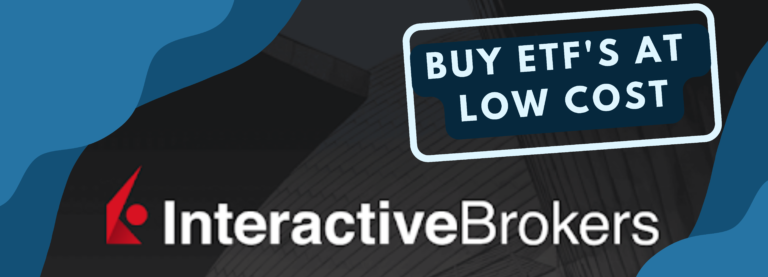What is a Covered Call ETF?
A covered call ETF is a type of exchange-traded fund that employs a popular options trading strategy known as a “covered call.” The strategy involves holding a portfolio of stocks and selling call options on those stocks to generate additional income.
In this blog post, we’ll take a closer look at what covered call ETFs are, how they work, and the pros and cons of investing in them. You can easily access many different Covered Call ETFs with InteractiveBrokers.
Understanding Covered Calls
Before diving into covered call ETFs, let’s first take a look at the underlying strategy – covered calls. A covered call is an options trading strategy where an investor holds a long position in a stock and sells call options on the same stock. The call options grant the buyer the right, but not the obligation, to purchase the underlying stock at a specified price (strike price) by a certain date (expiration date).
By selling call options, the investor collects a premium, which serves as additional income on top of any dividends received from the stock. However, the investor also limits their potential upside as they have agreed to sell the stock at the strike price if the buyer decides to exercise the option.
How Covered Call ETFs Work
A covered call ETF is essentially a fund that invests in a portfolio of stocks and sells call options on those stocks to generate additional income. The ETF is responsible for managing the underlying portfolio of stocks and selling the call options. This allows individual investors to gain exposure to the covered call strategy without having to execute the trades themselves.
Investing in a covered call ETF is similar to investing in any other ETF. You can buy or sell shares of the ETF on a stock exchange, and the price of the ETF will fluctuate based on the underlying portfolio of stocks.
Pros and Cons of Covered Call ETFs
Pros:
• Income Generation: One of the primary benefits of investing in a covered call ETF is the additional income generated from selling call options. This can provide a source of steady income for investors looking to generate passive income.
• Diversification: Covered call ETFs typically invest in a portfolio of stocks, providing investors with exposure to a diverse range of companies and industries. This can help reduce the risk associated with investing in a single stock.
• Convenient: Investing in a covered call ETF is a convenient way for individual investors to gain exposure to the covered call strategy without having to execute the trades themselves. The ETF manages the underlying portfolio and sells the call options, freeing up individual investors from having to manage the details.
Cons:
• Limited Upside Potential: By selling call options, the investor limits their potential upside. If the stock price rises above the strike price, the investor must sell the stock at the lower strike price rather than realizing the full potential gains.
• Complexity: The covered call strategy can be complex, and investors may not fully understand the mechanics of how the strategy works and the risks involved.
• Costs: As with any investment, there are costs associated with investing in a covered call ETF, including management fees and transaction costs. These costs can eat into the additional income generated by the covered call strategy.
In conclusion, covered call ETFs can be a useful tool for individual investors looking to generate additional income while diversifying their portfolio. However, it is important to understand the mechanics of the covered call strategy and the risks involved before investing. As with any investment, it is crucial to do your due diligence and carefully consider your investment goals and risk tolerance before making a decision.







